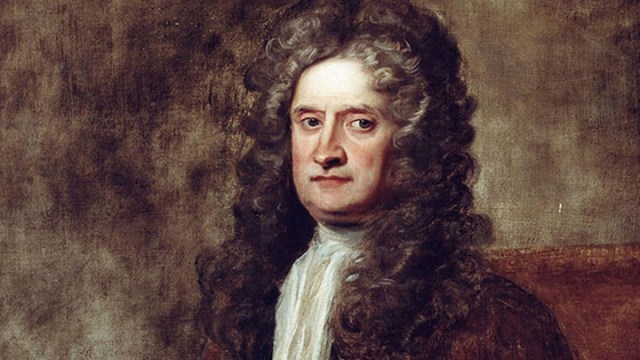The Milky Way: Invisible to most, but accessible to all!

Light pollution may be taking away the night sky, but it’s only a short journey to dark conditions for all of us.
“In order for the light to shine so brightly the darkness must be present.”
–Francis Bacon
Increasingly, more and more people worldwide are clustering together in urban areas. Overall, that’s had an undoubtedly positive impact on the environment overall, making it easier to centralize and distribute valuable resources. But at the same time, the growth of these cities — including urban sprawl — has an unintended and often overlooked casualty: the loss of the dark, night sky our ancestors enjoyed every clear night. The differences between what they saw and what most of us see is incredible.
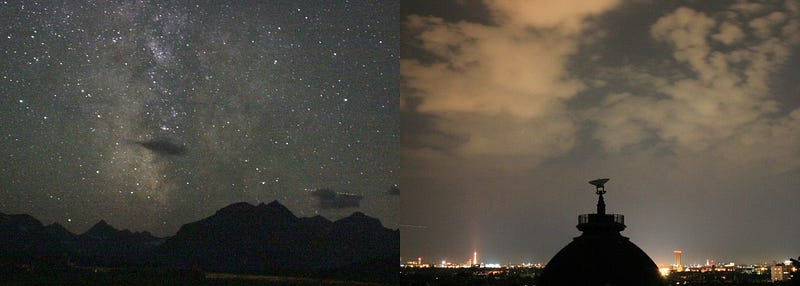
As a kid growing up in New York City, I had no idea how pitch black the night sky was, rather than blue, violet or orange; that’s an illusion due to the light pollution of (mostly) street lamps. I didn’t realize that under true dark conditions, clouds appeared dimmer than the sky, not brighter; that’s an effect of the ground brightness being greater than the brightness from the sum of all the stars and planets in the night sky. And I didn’t realize just how many stars were visible to the naked eye alone once you left the light pollution behind.
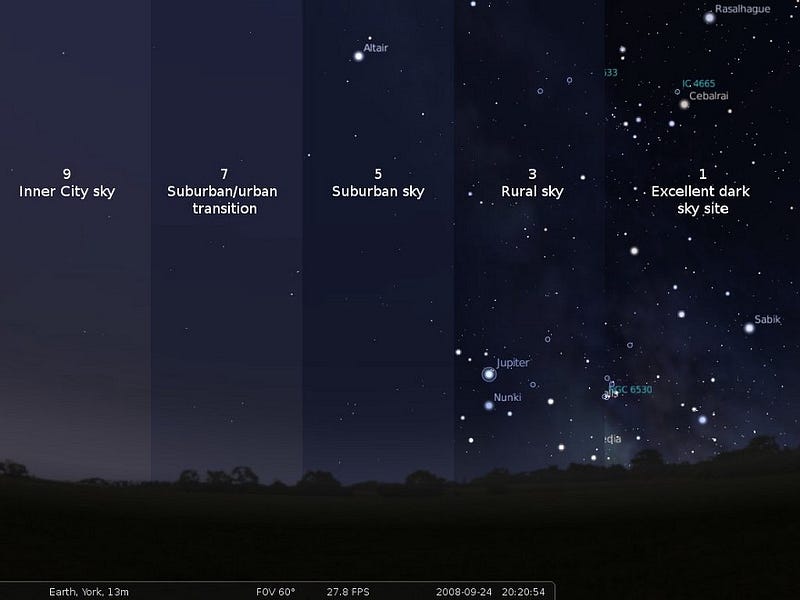
Over the past century, darkness has been harder and harder to find. Amateur and professional astronomers, along with nature enthusiasts and dark sky preservationists, have worked to develop a way to map and classify how well the sky can be seen on a clear moonless night. This scale — the Bortle Dark-Sky Scale — ranges from 1 (pristine, dark skies with less than 1% the brightness of the sky coming from the ground) to 9 (more than 2700% of the sky’s total brightness coming from the ground), where the most heavily light-polluted areas like New York, Rome, Paris and Chicago might reduce what you can see to only the brightest 10-or-20 stars, even on a pristine, clear night.
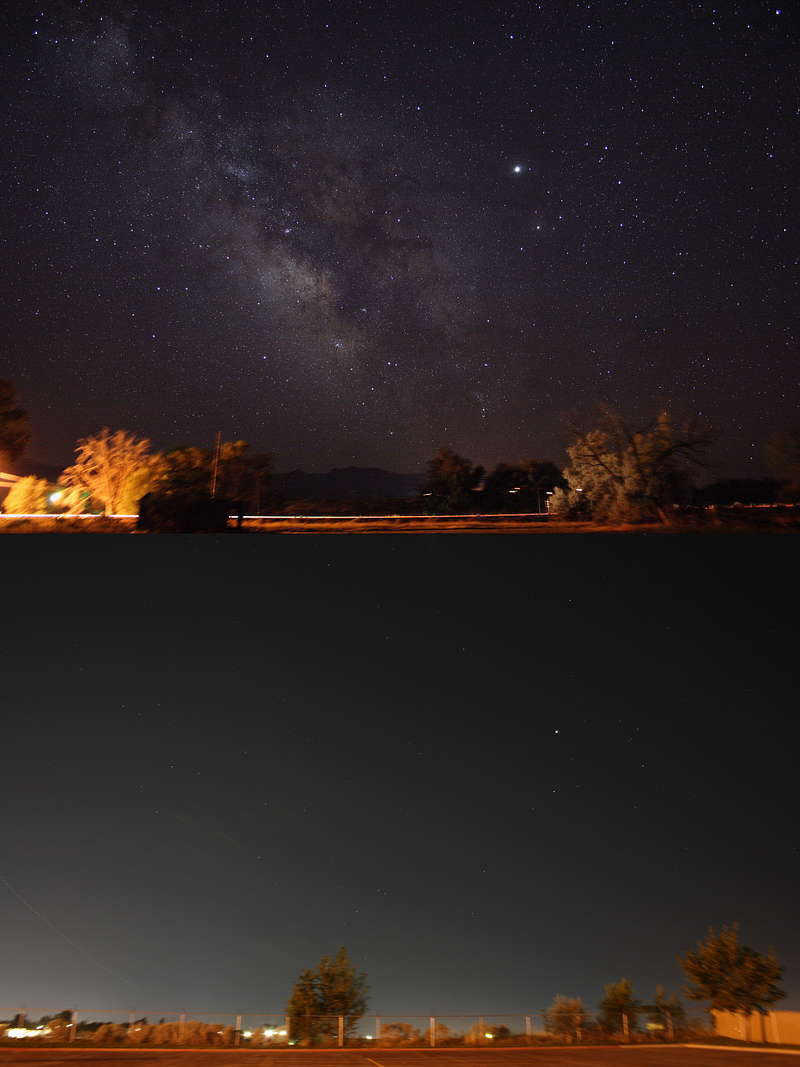
Recently, a collaboration led by Fabio Falchi published the most complete night-sky atlas of light pollution ever, spanning the entire globe. The mapping is that the most heavily light polluted regions are shown in white, transitioning to red, orange, yellow, green, blue and finally grey to black at the darkest. As you can see — particularly over Europe, North America, most of Asia, parts of South America and the eastern coast of Australia — the situation is pretty grim. It is now estimated that 80% of Americans and 60% of Europeans can no longer see the Milky Way at all due to light pollution. Singapore is the most light polluted country in the world.
Even though light pollution affects wildlife negatively, it’s the connection with the night sky that I think people miss the most. A great many of us feel a connection with the Universe beyond our world, and light pollution literally takes half of our experience — the “up” half — away from us. Thankfully, that dark sky experience is only an hour or two’s drive away for most of us.
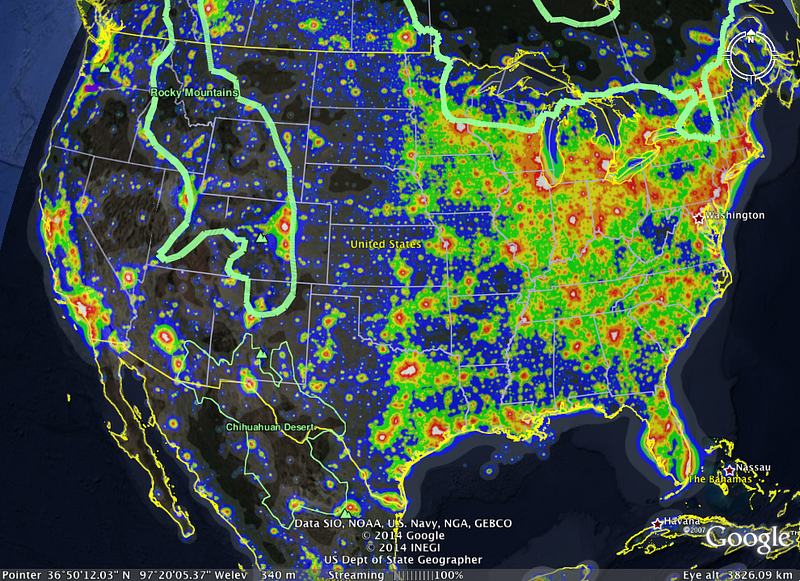
If you can get to a location that’s yellow or better (5 or less) on the Bortle scale, the Milky Way becomes visible, and if you get to green or better (4 or less) it becomes quite detailed, particularly when it’s closer to directly overhead, as it is during much of the summer. Those of you in North America can install a Google Earth overlay to experience where “darkness” is for yourself, or click the link here to go to an interactive online light pollution map. And if you do, you just might be surprised at how closely accessible a dark sky experience is to you.
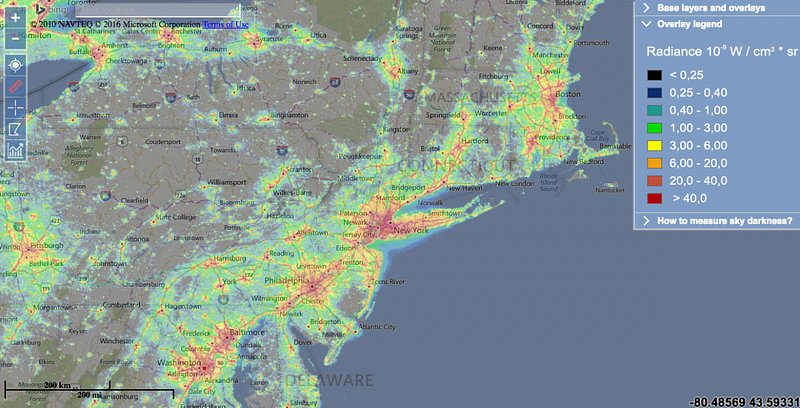
Amateur astronomy clubs hold star parties at these dark sky locations all the time, all over the country and world, and movements are underway to ensure and safeguard Dark Sky Preserves for both astronomical and simple human enjoyment purposes. Our greatest natural wonder might not be anything here on Earth, but rather the Universe beyond.

Cities like Tucson and countries like Germany have taken great initiatives to minimize the light pollution, and as a result their citizens’ accessibility to the night sky averages 2–3 steps better on the Bortle scale than in other, comparably developed locations. If we care about it, this is something that’s easy to change: less night lighting, less unshielded lighting, and less blue-light lighting (and more red) all help our night visibility tremendously. If we look at the Earth from space, we can see — if we look down at night — exactly what we’ve done.
https://www.youtube.com/watch?v=Ip2ZGND1I9Q
There’s a big difference between “well lit” and “brightly lit.” If we take care to learn the difference, we can change the world. Take a trip to a dark sky location this summer on a moonless night and just look up, just for a little while. It might change your whole outlook on life.
This post first appeared at Forbes, and is brought to you ad-free by our Patreon supporters. Comment on our forum, & buy our first book: Beyond The Galaxy!





